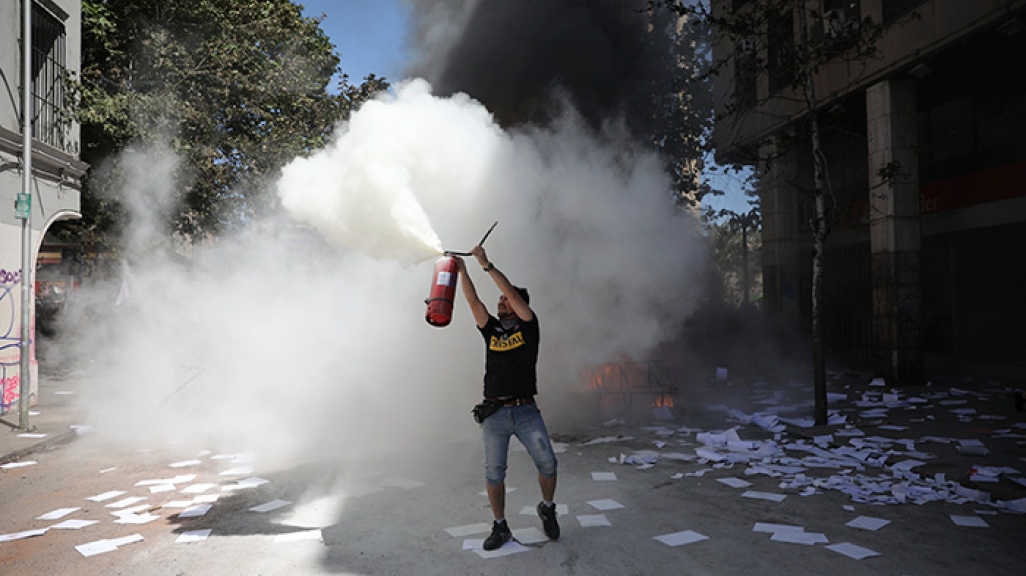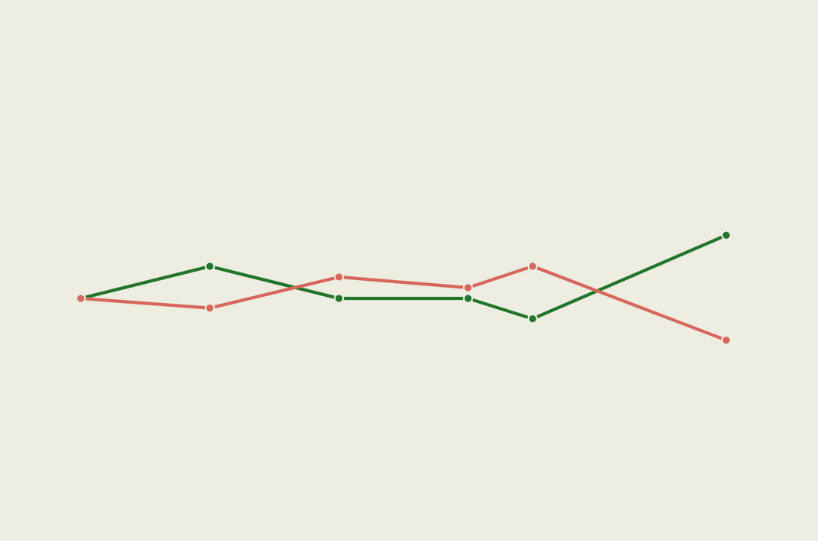AS/COA Insider: Brian Winter on Latin America's Season of Discontent
AS/COA Insider: Brian Winter on Latin America's Season of Discontent
From Ecuador to Chile, we’re seeing a “region on fire,” says our vice president. Here’s a look at what’s sparking the turmoil—and how a look at recent history offers hope.
People are taking to the streets in a number of Latin American countries. What are the forces behind the unrest? And what can leaders do to resolve it? AS/COA Vice President and Americas Quarterly Editor-in-Chief Brian Winter talks about the economic stagnation that sparked the discontent, as well as why recent history offers some hope for the region’s future.
- Read Winter’s Americas Quarterly article: “Latin America’s Decade-Long Hangover”
- To speak with an expert on this topic, please contact mediarelations@as-coa.org.
AS/COA Online: In recent weeks, we’ve seen turmoil in the streets of Bolivia, Chile, and Ecuador. People watching Latin America are asking themselves, “why now?” And you said yourself, everyone is asking, “Even in Chile?” Why do you think all of this turmoil is happening now?
Brian Winter: Latin America is a really diverse region, of course. But there is one common denominator to all of this, which is these economies that are just not growing. Latin America, on average, will grow just 0.2 percent in 2019. That’s pitiful. Really disappointing, especially given the way the economy boomed last decade. For comparison, emerging markets across the world this year will grow 3.9 percent. So it shows you just how badly the region is missing out on this cycle of growth.
Sometimes numbers like GDP can seem theoretical, but what we’re really seeing, I think, here at the end of 2019 is that this macro situation has trickled down into the micro level—basically into people’s pockets. And people are feeling a lot of pressure on their expenditures because costs are rising and salaries are no longer growing.
Look at the triggers of the protests in both Ecuador and Chile. In both cases, it was essentially increases in public transportation. In Ecuador, it was fuel prices, technically. But in countries where salaries are not growing, being asked to pay even a little more just to move around is enough to push people out on the streets.
AS/COA Online: That leads to my second question that Latin America has experienced stagnant growth in the past decade. So, this issue is not just about 2019; it’s the past decade as well. You’ve called this effect “the hangover.” What has been the most important consequence of this past decade in these countries?
Winter: I think to really tell the story of this decade, we have to go back to the previous one and think about what happened in the 2000s. You saw almost 100 million Latin Americans come out of poverty and into the middle class from 2003 to 2013. This was an era when people gained access to things like refrigerators, cars, and big-screen televisions for the first time. And, critically, everybody thought that the good times were going to keep rolling.
Now, here we are. There’s been a slowdown generally throughout the region. You saw one of the worst economic collapses ever in Venezuela, but you also saw the worst, deepest recession in Brazil’s history. You saw a failed reform drive followed by a recession in Argentina. Even the relatively resilient countries on the Pacific coast of South America have struggled. As a result, you have these very high expectations followed by a mediocre reality, so people are mad. And they’re not only mad at an individual politician or a particular party but at the system as a whole.
Polls tell us this. If you look at Latinobarómetro’s most recent poll asking people how satisfied they are with democracy, it’s the lowest level on record. That opens the door to populist leaders and more slow growth and more turmoil. It’s a kind of vicious cycle like what we’ve seen in Latin America in the past, in the 1970s and 80s. But for those of us who never lived through that, at least as adults, it’s been quite a shock.
AS/COA Online: Can these governments respond to their constituents’ dissatisfaction in the absence of an economic boom? What can they do now?
Winter: Well, the sad irony of these protests is that it makes the very thing that could improve the situation more difficult, which is reform. Not just economic reform, not just the things like taxes and social security, but education reform and spending on infrastructure. And for those things to happen the basic conditions have to change. Latin America invests less of its GDP than any other region except for Sub-Saharan Africa. For that to change, business confidence needs to improve and governments need to push sometimes difficult changes through Congress.
If you look around right now, you see a region on fire and it’s not encouraging. On the other hand, it’s true that we’ve been through dark moments before. As recently as 2002 the region looked really bleak; that was a time where you had financial crises in Brazil, Argentina, and Venezuela, and Colombia also faced political also. What followed was the best decade in the history of Latin America since the end of World War II.
So, I think it’s important not to lose hope, remember your history, and know that the region has these ups and downs. But I also don’t want to be naïve, and it’s hard right now to see that specific reason for hope even if you know that the region will come out of this sooner or later.
This interview was lightly edited for clarity.










